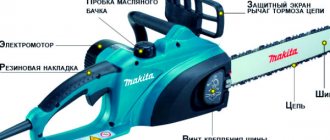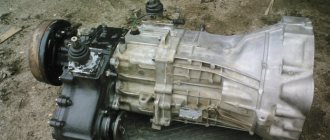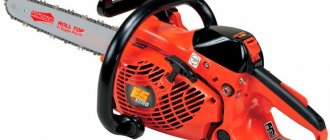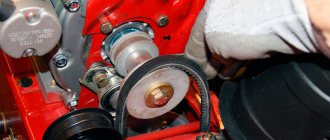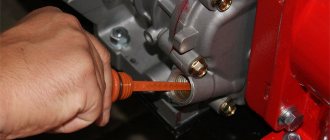As a child, winter always seemed like something fabulous and magical. Children love it when there is a lot of soft, white snow. For adults, this is perceived completely differently. Especially owners of private houses and employees of public utilities.
In winter, we have to solve the problem of removing fallen snow. Sometimes snowfalls are so heavy that they can completely stop traffic in a big city.
There is nothing else left to do but start clearing the snow, removing snowdrifts from the roadway, sidewalks, and footpaths. But if previously enormous effort and a lot of time were spent on this, since cleaning was carried out manually, now there is special equipment.
They are used not only by public utilities, but also by residents of private houses, owners of dachas and country cottages with large areas. Handling snow manually with a shovel is problematic.
But special equipment also needs care to ensure stable performance, trouble-free operation and a long service life. In many respects, all this depends on the timeliness of oil changes, as well as the correct choice of oil for your snowblower.
What are the requirements for oil?
The primary question is what kind of oil you should put in your snow blower. This is where subsequent maintenance of equipment begins.
Here it is worth recognizing that the requirements are quite stringent. This is due to the operating conditions of the snow blower. After all, equipment has to work with snow, high humidity, and also in low temperature conditions.
To understand what kind of engine oil to properly pour into the engine of your snow blower, you need to understand the requirements. The main ones are:
- high energy saving, which directly affects oil consumption during operation;
- increased lubrication characteristics to extend equipment life;
- operational period and the time during which the oil retains its maximum properties (affects the interval between replacements, as well as the financial costs of maintenance);
- versatility, allowing lubricant to be poured into different types of engines;
- compatibility indicator that meets the requirements imposed by the engine.
These are the basic criteria that experts and experienced snow blower owners advise you to pay attention to.
Really good motor oils should:
- quickly lubricate mechanisms and rubbing surfaces, regardless of weather conditions;
- evaporate minimally, maintaining a high oil level in the system for a long time;
- prevent active wear of moving and rubbing engine elements;
- prevent the formation of corrosion and rust spots on metal parts;
- provide resistance to oxidative processes;
- minimize, or better yet completely eliminate, the formation of soot and sludge in the engine.
But this is objectively not enough to choose oil for your snow blower.
How to quickly remove the gearbox
To perform a scheduled lubricant change, the gearbox must be removed from the snow blower. The algorithm for this process consists of several simple operations.
- Place the snow blower level and stationary.
- Remove the plastic protection from the belts and the auger cable that goes to the drive.
- Unscrew the screws located behind the “snail” (round body) for throwing out snow.
- Remove the belt that goes from the pulley to the auger. You should carefully pry it off with a screwdriver.
- Unscrew the screws securing the auger shaft.
- Turn the snail so that it is in its normal position until it clicks. Carefully remove the auger mechanism and impeller.
- Remove the shear bolts from the auger and remove the shaft.
Engine type value
What kind of oil will be poured into a snow blower largely depends on the type of engine installed on the equipment.
In the case of snow blowers, there are 2 options:
- two-stroke engine;
- four-stroke engine.
Each type of internal combustion engine has its own technical features, as well as the nuances of the lubrication system.
From a technical point of view, the lubrication procedure can be carried out manually by the user, or occur automatically in the power unit itself.
The key feature of a two-stroke engine is that it does not use pure oil, but a mixture of oil and gasoline. They should be mixed in the proportions specified by the manufacturer. Automatic mixing occurs by pumping components from tanks through pipes.
The four-stroke engine is considered more advanced and modern. Here the system uses oil separately from fuel. The lubrication unit includes a filter, valve, pump and supply line.
Due to the technical and design differences between engines, they are subject to special requirements in terms of choosing engine oil.
- Two-stroke. In such engines, it is extremely important that the oil burns efficiently, but at the same time produces a minimum amount of soot.
- Four-stroke. It is also more important that the lubricant retains its initial properties for as long as possible, during a given period of operation.
Depending on the type of engine, the corresponding types of oils are distinguished.
How to add new lubricant
After you have removed the gearbox and divided the housing into two parts, thoroughly rinse its interior to remove any traces of old grease. For this purpose, it is better to disassemble the mechanism and put all the parts in a container with gasoline for several hours or a day. After the specified time, all parts must be pulled out and dried well with a rag. Then the gearbox must be assembled and carefully placed in its original place in the snow blower. Then, without replacing the protective housing cover, unscrew the fitting and use a large syringe to pour new high-quality lubricant into the gearbox.
To ensure that the new oil can get into all the grooves of the mechanism and lubricate all the parts, start the snow blower engine, lift its front part and sharply press the auger drive lever several times.
Types of motor oils for snow blowers
Before purchasing motor oil to service your snow blower engine, you need to select the appropriate oil composition.
There are 3 types in total:
- synthetic;
- mineral;
- semi-synthetic.
Of course, each type of lubricant has its own characteristics.
- Mineral oils. A natural product obtained by refining oil. Contains an impressive amount of sulfur. And sulfur provokes oxidative processes on the metal. To reduce the impact of sulfur, various additives, additives and synthetic substances are used. The advantage is low cost.
- Synthetic lubricants. They are completely artificial. At the same time, they have the best technical and operational characteristics. Synthetics are more economical, protect the engine better, and can be used in difficult climatic conditions. And even under extreme loads on equipment. There is actually only one minus. This is a high price.
- Semi-synthetic. Here, about 30% of the composition is synthetic substances and another 70% of mineral components. Combines the advantages of mineral and synthetic oils. Plus the price is average.
Oils are also divided into universal, winter and summer.
Since snow blowers are designed to clear areas of snow, this automatically implies operation only in winter. That is, you should fill it exclusively with winter or universal all-weather motor oils.
Basic faults
The engine does not start or stalls
- The fuel has run out or is of poor quality (fill in new fuel).
- The fuel valve is closed or not fully open (open it).
- The high-voltage wire from the spark plugs is disconnected (connect them).
- The air damper is in the wrong position (turn the lever and close the damper).
Snow blower does not throw snow
- The chute is clogged (turn off the engine and remove the spark plug, remove the accumulated snow and ice from the chute, clean the inside of the snow intake).
- The auger activation cable is not adjusted (adjust the position of the cable).
Strong auger vibration
- Auger deformation (tighten all connections).
What to choose
This is not to say that the range of motor oils for snow blowers is impressive, which is why it is not always possible to visit a store and immediately find the necessary type of lubricant.
If we talk about specialized stores, then here you can usually find several options for lubricants that are aimed specifically at snow blowers:
- M82K.
- M-8M.
- MT-16r.
The first two compositions are mineral and have an impressive range of applications. And if problems may arise with the search for the M-82M, then finding the M-8M will not be difficult. This is not surprising, since the lubricant is widely used in different countries. It has good anti-corrosion properties, is not afraid of low temperatures, and has a long service life. Oil can be poured into both diesel and gasoline engines of snow blowers, as well as other garden equipment.
But the MT-16r is already purely diesel. It also protects well against corrosion, resists oxidative processes and prevents rapid wear of engine components.
Multi-purpose oils have gained particular popularity among snow blower owners. It is worth presenting a few worthy examples here.
- MTD 5W30. German mineral motor oil designed for 4-stroke engines. Demonstrates good efficiency and helps start a cold engine in the cold without any problems. Protects against wear and corrosion.
- Oregon 30. American semi-synthetic product. Filled only in gasoline engines. Cleans the engine well from the inside. Plus, it is minimally consumed during active use.
- Craftsman 5W30. Domestic development. Suitable for various garden equipment equipped with a diesel or gasoline engine. Helps reduce noise levels, protect the engine from wear, corrosion and oxidation processes.
- Ravenol Schneefraese 4Takt. Has a viscosity German development. From the name it is clear that the oil is intended for 4-stroke engines. It evaporates and is consumed minimally and does not provoke oxidative processes. Can work even if the engine has not been warmed up beforehand.
- Hammer 10W40. Semi-synthetic oil, suitable for various purposes and tasks, including maintenance of walk-behind tractors and snow removal equipment.
Of course, the list doesn't end there. But try to choose only those oils that have proven themselves well.
Don't forget about one more problem of choice. These are fakes. Even if you find a high-quality composition, make sure that the container is not counterfeit and that there is an original product inside.
Owner reviews
Evgeniy, 44 years old, Pskov
“The Gasoline Hooter is a good snow blower! My neighbors had one at their last dacha, and I remembered it so well that when they moved to another region and settled on their own property, I bought it for myself. This happened in 2015. The technology, although Chinese, did not let us down. In the summer I store it in the garage, draining the gasoline before storing it, of course. In winter it just stands under a canopy, covered with a tarpaulin. Characteristics: very durable, reliable and productive machine. It quickly clears snow; during operation, almost without stopping, you can turn the chute where you need it and change the direction of snow ejection. I recommend!".
Automotive oils for snow blowers
Many people are interested in the issue of using automotive oils in snow blowers. There is an opinion that such liquids cannot be poured and this can lead to unpleasant consequences.
In fact, these are myths that have nothing to do with reality. Most likely, such reviews and erroneous judgment are due to the fact that the wrong machine composition was chosen for the snow blower. He did not meet certain criteria, which led to the corresponding result.
So to the question of whether you can fill your snow blower with regular car engine oil, the answer is yes. If you can't find a specialized oil, there is nothing wrong with replacing it with motor oil for cars.
Only here it is important to pay attention to the markings. Focus on the following viscosity parameters.
- 20W. Suitable for regions where winter temperatures are at least -10 degrees Celsius. In colder weather, you cannot run a snow blower with oil of this viscosity.
- 15W. Here the temperature limits are already -15 degrees Celsius, which is suitable for colder climates.
- 10W. If in winter the temperature does not drop below -20 degrees Celsius, you can safely buy automobile motor oil with this viscosity value and pour it into the snow blower.
- 5W. This is already an option for colder winters, when numbers down to -25 degrees Celsius are visible on the thermometer.
- 0W. Oils for the coldest regions. They are able to work in a snow blower at outdoor temperatures down to -30 degrees Celsius.
Another important point is the matching engine type. That is, choose motor oil for the same type of internal combustion engine as that installed on the snow blower.
In other words, you cannot pour oil for 4-stroke engines into a 2-stroke engine and vice versa. Although in this case we will most likely be talking about motor oils for motorcycles, since there are no cars with a two-stroke engine.
It is quite obvious that summer oils are completely unsuitable for snow blowers.
Comparison of huter sgc 4000 and huter sgc 4100 models
What will be the difference between two seemingly quite similar models of snowplows - Hooter SGC 4000 and Hooter SGC 4100? Here is a list of the existing differences:
| Hooter SGC 4000 | Hooter SGC 4100 |
| Machine weight: 61 kg | Machine weight: 73 kg |
| Fuel tank volume: 3 l | Fuel tank capacity: 3.6 l |
| Forward/reverse speeds: 4/2 | Forward/reverse speeds: 5/2 |
Other technical parameters of the snow blowers are identical, however, according to the instructions, the manufacturer may make some changes to the design of the snow blower to improve its performance.
Please check the equipment and technical parameters of the Huter snow blower at the time of purchase.
To get a more visual representation of the quality of operation of the huter sgc 4100 snow blower and how it may practically differ from the SGC 4000 model, we invite you to watch the video below.
Oil change interval
Once oil is poured into the engine of snow removal equipment, it cannot remain there forever, effectively performing all the functions assigned to the oil. Therefore, there is such a thing as snow blower engine maintenance, in which you need to drain the old fluid and fill in new one.
First, you should look at the product data sheet and instruction manual. Here the manufacturer is obliged to indicate which oil is optimal for the installed engine, as well as how often it needs to be changed.
If there is no such information in the documents, then one should doubt the quality of the equipment itself.
When for one reason or another it was not possible to find out the official recommendations, focus on the average values.
The recommendations here are as follows:
- On a new snow blower put into operation, the oil filled from the factory must be changed after 5 hours of operation. When the equipment has worked for these 5 hours in total, a replacement is carried out.
- The second and third replacements are also carried out at short intervals. On average this is from 5 to 10 hours of work.
- Subsequent replacements can be carried out at intervals of 50-55 hours. But provided that the snow blower operates stably and at standard load.
- If the air temperature is low and the density of the snow being removed is high, then it is better to change the engine oil after 35 operating hours.
It is important to drain the old fluid as much as possible and fill in new one. And this is only possible if the engine is preheated.
In general, there are several factors that also significantly affect how long the filled oil can effectively perform its tasks:
- the area of the territory that has to be cleared of snow;
- duration of continuous operation of the engine;
- terrain features of the site;
- volume and density of snow masses;
- the presence of a hard snow crust on the snow surface.
The more difficult the operating conditions, the more often it is recommended to change the oil. A similar principle applies when servicing cars.
Specifications
Technical characteristics and parameters of the Huter SGC 4000 snow blower:
- power 5.5 hp;
- 6 speeds (including 2 reverse gears);
- snow clearing strip width - 56 cm;
- the height of the snow cover that can be captured by a snow blower is 42 cm;
- fuel tank capacity - 3 l;
- type of movement: self-propelled;
- starting: manual starter;
- wheel type: with rough tread;
- working part: two-component, represented by a fan and auger, snow is raked and thrown to the side;
- adjustable snow throw range (maximum - 13 meters);
- there is an anti-corrosion coating on the working parts of the snow blower;
- Thanks to high-quality assembly, the snow blower maneuvers perfectly on any surface, does not fall to one side and does not “go away” to the side when moving.
Replacement instructions
Now directly to the question of changing the engine oil in a snow blower.
This is not to say that changing the oil is very difficult. Violation of basic rules and recommendations can lead to unpleasant consequences:
- if you drain a little of the old lubricant, a portion of fresh oil will not change anything much, and the engine will soon fail;
- a lack of fluid will lead to overheating and destruction of elements;
- Fill too much, oil will spill onto the spark plugs and cause starting problems.
To avoid all this, you need to know how to change and what kind of oil should be in your snow blower.
Determining how much oil is needed for the engine of a snow blower is not difficult. It is best to find out information from your passport data. Or follow the simple principle - as much as you drain, you fill in as much. Only here you also need to take into account that there could be little or too much oil in the system.
Having determined the type, brand and volume of oil for your snow blower, you can begin to change the engine oil. To do this you need to do the following:
- place the snow blower on a flat horizontal surface;
- start the engine;
- let the engine run for a few minutes to warm up the oil;
- turn off the engine;
- prepare a container of the required volume into which the waste will be drained;
- open the drain hole by placing a container under it;
- wait until the lubricant flows out completely;
- close the drain hole;
- unscrew the filler cap and dipstick on the neck;
- carefully pour in a new portion of lubricant;
- start the engine and let it run for a few minutes;
- use a dipstick to check the current level.
If there is not enough oil, which is clearly indicated by the dipstick, then add a little more. If there is excess liquid, it can be drained through the drain hole, or pumped out using a syringe and a long tube attached to the end. Moreover, the second option is preferable, since the volume can be precisely controlled.
How to fill correctly and how often
Snow blowers have 2 types of fill holes. The first side one is located on the side, where it is impossible to pour liquid without a watering can or funnel. But there is a plus: you won’t be able to overfill it, the oil will immediately start leaking out. The second hole from the top is more convenient to fill, but there is a chance of pouring a lot, and this is already harmful for the engine. Therefore, in order to correctly add liquid, several conditions must be met:
- Place the snow blower on a flat surface;
- find the filler bolt and unscrew it;
- Gently wipe the pouring area with a rag so that debris does not get inside;
- you need to pour slowly and check with a dipstick so as not to overdo it;
- close the tank with a lid and start the engine for a minute;
- Unscrew the cap and check, if there is insufficient supply, top up.
When purchasing a new unit, you need to run it in so that the parts gradually get used to each other. In winter, running-in usually lasts from 5-10 hours. After operating hours, the oil on the snow blower is changed. The old and all the rubbish must be drained, and the new must be filled in. Many manufacturers strongly advise using mineral oil during break-in. Synthetics do not allow parts to undergo full grinding.
Today, there are many known ways to make snow removal machines from household trimmers. Most…
According to the regulations, the oil change occurs at 25-50 hours (different manufacturers have their own time frames). Regulated replacement can occur once during the winter season, within the same 25-50 hours. You need to pay attention to the oil so that its level is within normal limits. In principle, any naturally aspirated engine today is equipped with sensors, and if by chance there is no lubrication for some reason, it simply will not start. But it’s better to never forget about it.
Description
Huter SGC 4000 was developed in Germany. It is intended for snow removal in small areas, such as local areas, car parks or pedestrian roads.
Huter SGC 4000 self-propelled snow blower. That is, the motor drives not only the cleaning pulley itself, but also the wheels. With this solution, working with this equipment becomes much easier for owners.
The Huter SGC 4000 snow blower has a 5.5 horsepower gasoline engine. It runs on high-octane fuel AI-92. The gas tank capacity is designed for 3 liters of fuel.
The gearbox has 6 positions: 4 for forward movement and 2 for reverse movement. The operator’s task is to select the optimal speed and start working.
Distinctive characteristics of the Huter SGC 4000 snow blower:
- This is a self-propelled device with winter tires. They have a wide and pronounced tread for comfortable movement on any layer of snow;
- Owners can adjust the direction of snow throwing directly while driving;
- The auger is made of high-quality steel, which is capable of crushing stuck together snow and ice without damaging parts;
- The frame around the auger has a large height, which allows owners to remove a thick layer of snow cover. The width of the single grip is 56 cm, and the maximum height is 42 cm;
- A powerful four-stroke gasoline engine is capable of ensuring the operation of the huter sgc 4000 snow blower in any conditions;
- Easily accessible fuel tank for convenient refueling with gasoline. Since in many similar devices, refueling is a big problem, and the huter sgc 4000 snow blower has a wide neck in the tank. This allows you to avoid spilling gasoline during the filling process;
- There is no need for additional equipment or power sources. The snow blower operates completely autonomously.
Huter SGC 4000
Warranty and service official guarantee at the company service center
Description
Features and benefits of the Huter SGC 4000 snow blower
- The Huter SGC 4000 snow blower is self-propelled and is equipped with inflatable driving wheels with tires with a pronounced winter tread, which ensures reliable contact with the surface even in icy conditions.
- It is possible to quickly, almost on the fly, adjust the direction of snow ejection.
- Durable metal auger blades make it easy to crush even compacted and frozen snow.
- Restrictive shoes on the edges of the receiving chute protect it from damage and allow you to adjust the height from the surface to its bottom edge.
- The four-stroke gasoline engine has enough power to easily cope with all the loads associated with the work process of the snow blower and its movement.
- The fuel tank is located in a convenient location and has a wide neck, which makes filling it with gasoline easier.
- The snow blower is completely autonomous and does not require external energy sources.
General information
The Huter SGC 4000 gasoline snow blower
is a development of German engineers, designed for quickly removing snow cover in relatively small areas (near a country house, in a parking lot, walking path, etc.). The device is self-propelled, that is, not only its working units, but also the support wheels are driven by a fairly powerful (5.5 hp) four-stroke air-cooled piston gasoline engine with a manual starter. The engine is equipped with a 3-liter fuel tank for AI-92 gasoline, as well as a system that makes it easy to start it at fairly low ambient temperatures. The operator just needs to select one of 4 gears for forward movement, or one of 2 reverse gears, and then only give the snow blower the desired direction using the handle.
Pneumatic tires, which are equipped with a pair of support wheels of the unit, have a special “winter” tread, which provides sufficient traction with a snowy surface even in icy conditions, practically does not allow slipping and allows the traction forces of the engine to be fully realized.
The working part of a gasoline snow blower is represented by a two-stage auger-fan system. Its ejection chute with reflector can be rotated and fixed in any direction within a range of 180 degrees, and the fan is capable of throwing crushed snow up to 13 meters from the cleaning site. The installation height of the receiving chute from the surface to be cleaned is adjusted manually. The throw distance of the removed snow can also be adjusted manually by adjusting the reflector. In one pass, the Huter SGC 4000 snow blower is capable of clearing snow cover up to 420 mm thick from a strip 560 mm wide.
Device and principle of operation
The Huter SGC 4000 snow blower is quite convenient and easy to operate.
This is achieved due to the rational and balanced placement of its drive, operating systems and controls relative to the axis with wheels. The general design is a base frame mounted on two wheels, in the front part of which a receiving chute with an auger is mounted, and in the rear part there is a guide handle and controls. On top there is a gasoline drive and a throwing system (fan with reflector). All external surfaces, including the auger blades, have a durable and effective anti-corrosion coating. This is especially true given the environment they will be dealing with. The power plant of the snow blower is a four-stroke piston single-cylinder gasoline engine of the Huter 168F OHV brand, air-cooled. The nominal 5.5 hp it develops. the power is sufficient to provide mechanical energy to the working units and movement of the entire structure. The engine is lubricated with oil from the crankcase forcibly. The motor is started manually using a cable starter. The engine power system is designed in such a way that it can be easily started even when cold in subzero temperatures. A fuel tank of 3 liters of gasoline allows you to work without refueling for quite a long period, depending on the load. The working part of the snow blower begins with a catching chute made of durable sheet steel. It is made in the form of a bucket with the open part forward. At the bottom, on both sides, special support shoes are attached to its body. Each of them can be lowered or raised, thereby adjusting the height of the gutter above the surface to be cleaned. A rotating auger is installed inside the chute. It has a transverse arrangement, and its blades are made in a helical shape and are installed so as to rake snow into the middle of the bucket. The blades are metal and allow you to grind even stale frozen snow. There is a fan behind the chute with the auger. It is placed in the body of the snow blower. At its output, a special chute for throwing snow and a reflector are mounted, with which you can direct the ejection and adjust its range within the limits of possibilities. The controls of the Huter SGC 4000 snow blower are represented by an arched closed handle, firmly fixed to the body on both sides. Its transverse part is designed to hold and direct movement, and the main control elements are mounted on the side rods. These are levers for turning on the drives to the auger, to the wheels, and to control the throttle valve. Below the handle there is a gear shift lever (4 forward and 2 reverse), as well as adjustment of the direction of snow ejection.
The chassis is a drive axle connected to the engine through a clutch and gearbox. The axle is equipped with a pair of wheels with steel rims and pneumatic tires with a pronounced “winter” tread.
Moving forward, the snow blower grabs the snow located in front of it with a chute. The snow falls on the auger blades, is crushed and raked into the middle, directly to the fan inlet. A rapidly rotating fan creates a powerful air flow that removes snow that enters it. Thus, moving forward, the unit moves the snow that gets in its path far to the side.
Reviews
The Huter 4000 petrol snow blower is mainly used for private use as it is not intended for professional and continuous snow removal. Here are some reviews from happy owners of this model.
Stanislav writes:
“I've been using this device for exactly a year, and this is what I can say about it. The disadvantages include inconvenient control of the auger and insufficient backward speed of the machine. But everything else works great. The snow threshes quickly and in good quality, just have time to direct the chute. The forward progress is excellent. It is thrown approximately 5-7 m, and it does not matter what kind of snow condition it is. 3 liters of fuel are consumed in about an hour of intensive work. It starts quickly and efficiently, there have never been any problems with this, despite the frost. I didn’t adjust anything or make any repairs, except for replacing and adding oil, and I tightened the belt a couple of times. I work with 4 acres of land, and I also help my neighbors a little).”
Vladimir writes:
“This is just a snow removal monster. I have been using this model for a long time, and it has become an indispensable assistant for cleaning at the dacha. It is comfortable to use, since the Hooter 4000 snowplow has greater maneuverability and stability. Therefore, it is a pleasure to drive it. Despite its high power, fuel consumption is relatively low. Based on experience, we can say that a full tank will last from 40 minutes to an hour and a half. Works well and cleans well the first time. That is, owners do not have to walk through the same area twice. In everyday life it is also simple. After use, it is enough to dry and lubricate all parts with oil.”
Comparison of Huter SGC 4000 and 4100 snow blower models
These two models are from approximately the same price segment. They are similar in structure and characteristics, but there are minor differences, namely:
- The 4100 model has five forward gears. 4000 has four.
- The Huter SGC 4000 machine can work with a snow height of up to 42 cm, and the 4100 with a snow height of up to 52 cm.
- The overall dimensions and weight differ accordingly. Hooter 4000 weighs 61 kg, and 4100 – 73 kg;
- The volume of the fuel tank is also different. In the 4000 model it is 3 liters, and in the 4100 - 3.6 liters. Thanks to this, you can carry out work longer without refueling.
Huter SGC 4100 snow blower in operation:
Specifications
| Model | SGC 4000 |
| Engine | 4-stroke, single cylinder |
| Power, hp | 6.5 |
| Speeds | 4 forward / 2 reverse |
| Working width, cm | 56 |
| Grip height, cm | 42 |
| Fuel tank volume, l | 3.0 |
| Move type | self-propelled |
